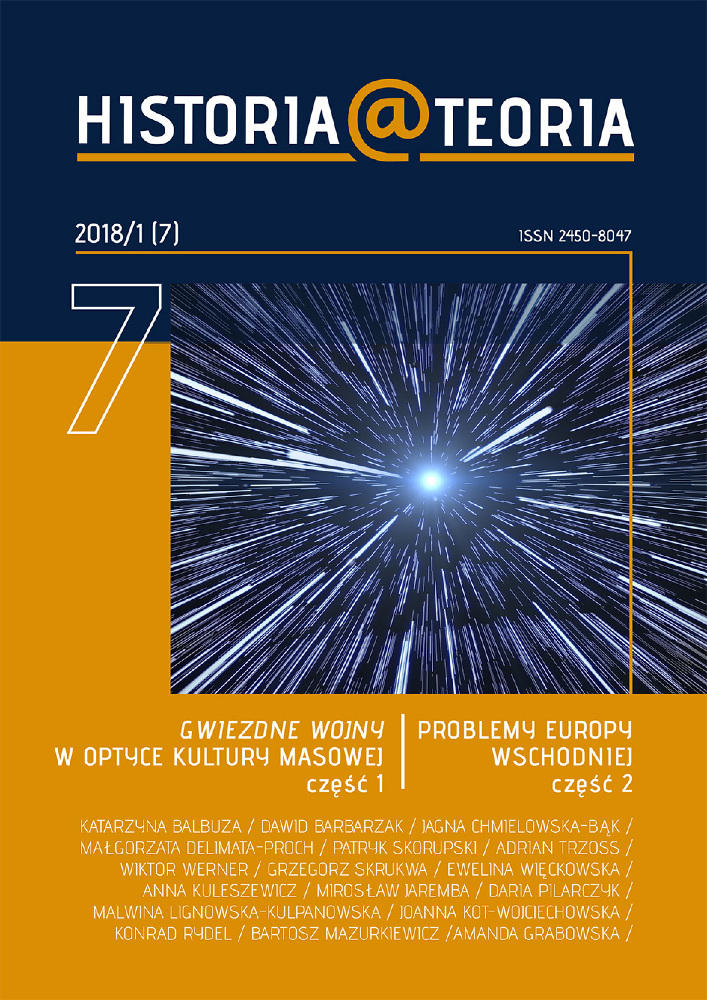Abstrakt
The aim of the article is the general characterization of cyberterrorism as a new and constantly evolving form of terrorism. The phenomenon was described in the context of globalization processes and the main definitions of terrorism were cited, followed by the specific factors determining cyberterrorism. The article was based on an analysis of source documents – legislation on terrorism prevention and cyberspace protection. Definitions review was performed. The results of earlier research related to the topic of work are quoted. It has been assessed that in the future the threat of cyber-attacks will be a challenge for states and international organizations. The development of modern technologies and the creation of computerized societies is a factor that provides new areas of action for terrorists. Potential targets of attacks are varied and difficult to protect. Preventive actions should be characterized by a comprehensive approach to the problem and systemic, long-term action in the international sphere.Bibliografia
Bauman Z., Globalizacja. I co z tego dla ludzi wynika, Warszawa 2000.
Bell D., Nadejście społeczeństwa postindustrialnego. Próba prognozowania społecznego, Warszawa 1975.
Bógdał-Brzezińska A., Gawrycki M.F., Cyberterroryzm i problemy bezpieczeństwa informacyjnego we współczesnym świecie, Warszawa 2003.
Collin B., The Future of CyberTerrorism: Where the Physical and Virtual Worlds Converge, 1997, http://www.crime-research.org/library/Cyberter.htm [dostęp:10.10.2017].
Denning D.E., Statement, Georgetown University 2000, https://fas.org/irp/congress/2000_hr/00-05-23denning.htm [dostęp: 10.10.2017].
Encyklopedia PWN, http://encyklopedia.pwn.pl/szukaj/globalizacja.html [dostęp: 10.10.2017].
Encyklopedia terroryzmu, red. B. Zasieczna, A. Zasieczny, Warszawa 2004;
Giddens A., Europa w epoce globalnej, Warszawa 2009.
Huntington S.P., Zderzenie cywilizacji i nowy kształt ładu światowego, Warszawa 2006;
Ministerstwo Spraw Wewnętrznych i Administracji, Rządowy Program Ochrony Cyberprzestrzeni Rzeczypospolitej Polskiej na lata 2011–2016, 2010, https://www.enisa.europa.eu/topics/national-cyber-security-strategies/ncss-map/Poland_Cyber_Security_Strategy.pdf [dostęp: 10.10.2017].
Ministerstwo Administracji i Cyfryzacji, Polityka ochrony cyberprzestrzeni Rzeczypospolitej Polskiej, 2013, http://www.cert.gov.pl/download/3/161/PolitykaOchronyCyberprzestrzeniRP148x210wersjapl.pdf [dostęp: 10.10.2017].
Laqueuer W., Terrorism, Boston 1977.
Pollitt M., A Cyberterrorism Fact or Fancy? [in:] Proceedings of the 20th National Information Systems Security Conference, Virginia 1997.
Rządowe Centrum Bezpieczeństwa, Narodowy Program Ochrony Infrastruktury Krytycznej, 2015, http://rcb.gov.pl/wp-content/uploads/Narodowy-Program-Ochrony-Infrastruktury-Krytycznej-2015-Dokument-G%C5%82%C3%B3wny-tekst-jednolity.pdf [dostęp: 10.10.2017].
Rządowe Centrum Bezpieczeństwa, Infrastruktura krytyczna, 2015, http://rcb.gov.pl/infrastruktura-krytyczna/ [dostęp: 10.10.2017].
Sassen S., Globalizacja. Eseje o nowej mobilności ludzi i pieniędzy, Kraków 2007.
Schmid A.P., Jongman A.J., Political Terrorism: A New Guide to Actors, Authors, Concepts, Data Bases, Theories, and Literature, Amsterdam 1988.
Toffler A.H., Budowa nowej cywilizacji. Polityka Trzeciej Fali, Poznań 1996.
Trejderowski T., Kradzież tożsamości. Terroryzm informatyczny. Warszawa 2013.
White K.C., Cyber-Terrorism: Modem Mayhem, Carlisle 1998.
Ziarek M., Bezpieczeństwo sieci wi-fi w Polsce 2012/2013: podsumowanie, 2013, http://securelist.pl/analysi/7229,bezpieczenstwo_sieci_wi_fi_w_polsce_2012_2013_podsumowanie.html [dostęp: 10.10.2017].
Licencja
Autorzy
Autorzy tekstów przyjętych do publikacji w czasopiśmie Historia@Teoria są zobowiązani do wypełnienia, podpisania i odesłania na adres redakcji umowy o udzielenie nieodpłatnej licencji do utworów, z zobowiązaniem do udzielania sublicencji CC.
Zgodnie z umową, autorzy tekstów opublikowanych w czasopiśmie Historia@Teoria udzielają Uniwersytetowi im. Adama Mickiewicza w Poznaniu niewyłącznej i nieodpłatnej licencji oraz zezwalą na użycie sublicencji Creative Commons Attribution-NoDerivatives 4.0 International (CC BY-ND 4.0).
Autorzy zachowują prawa do dalszego, swobodnego rozporządzania utworem.
Użytkownicy
Zainteresowani użytkownicy internetu uprawnieni są do korzystania z utworów opublikowanych od 2015 roku w Historia@Teoria pod następującymi warunkami:
- uznanie autorstwa - obowiązek podania wraz z rozpowszechnionym utworem, informacji, o autorstwie, tytule, źródle (odnośniki do oryginalnego utworu, DOI) oraz samej licencji;
- bez tworzenia utworów zależnych - utwór musi być zachowany w oryginalnej postaci, nie można bez zgody twórcy rozpowszechniać np. tłumaczeń, opracowań.
Inne
Uniwersytet im. Adama Mickiewicza w Poznaniu zachowuje prawo do czasopisma jako całości (układ, forma graficzna, tytuł, projekt okładki, logo itp.).
